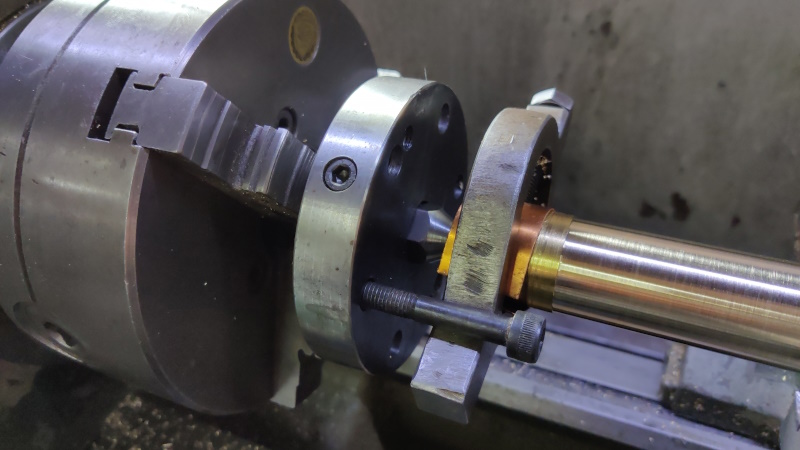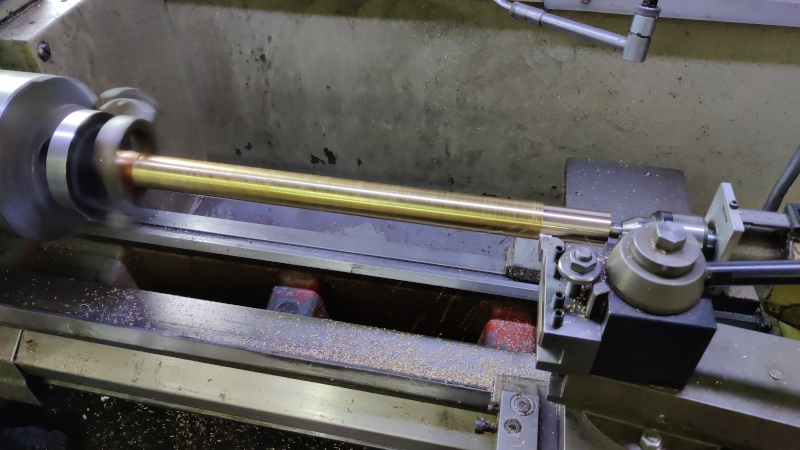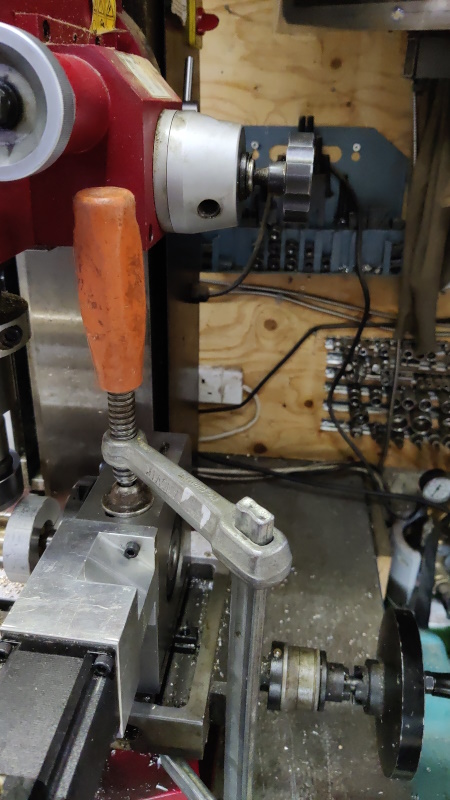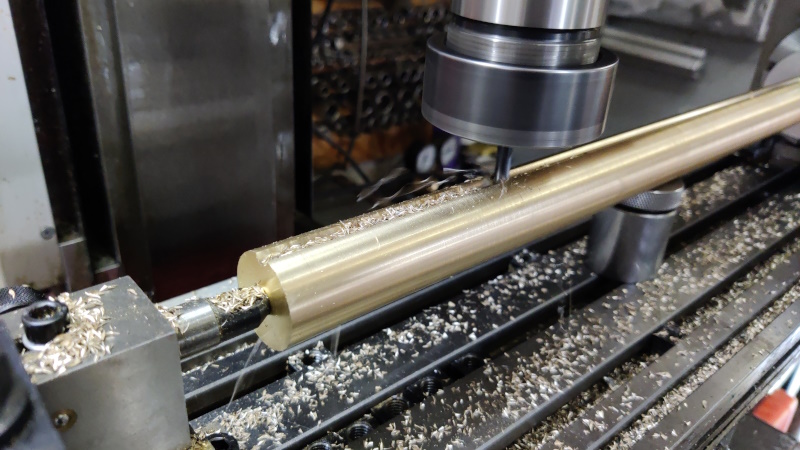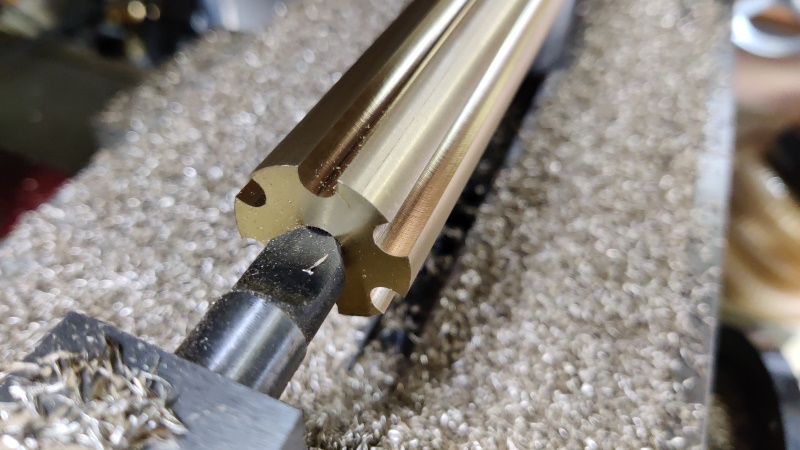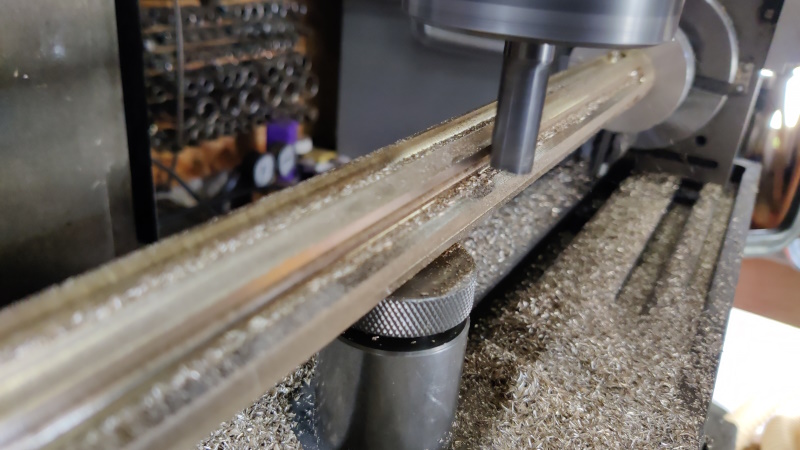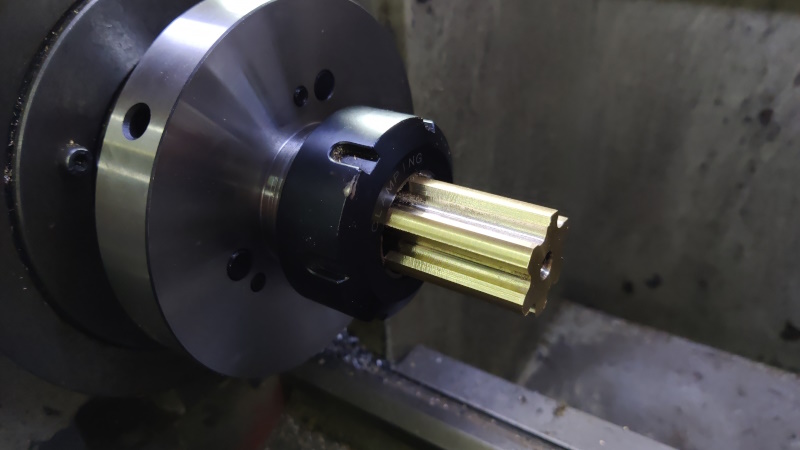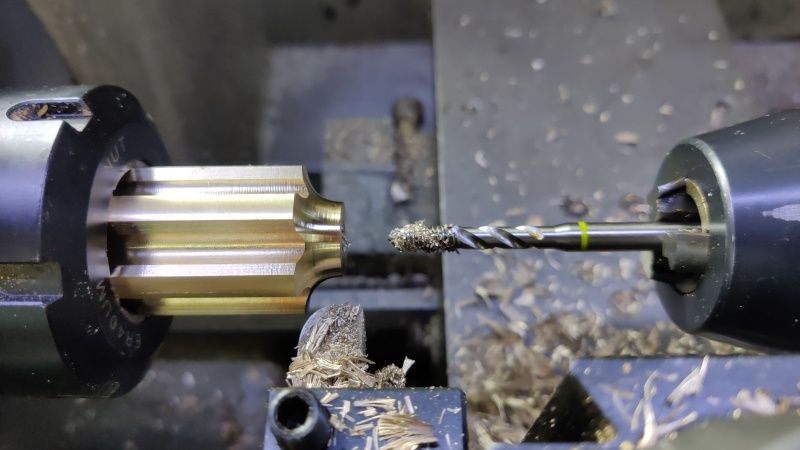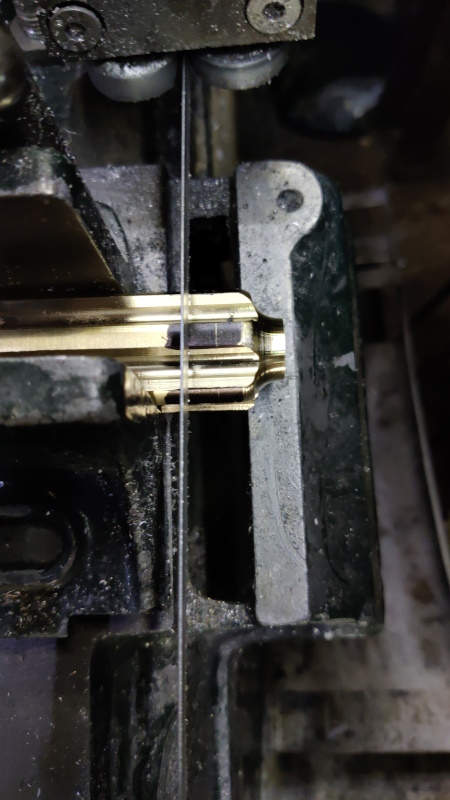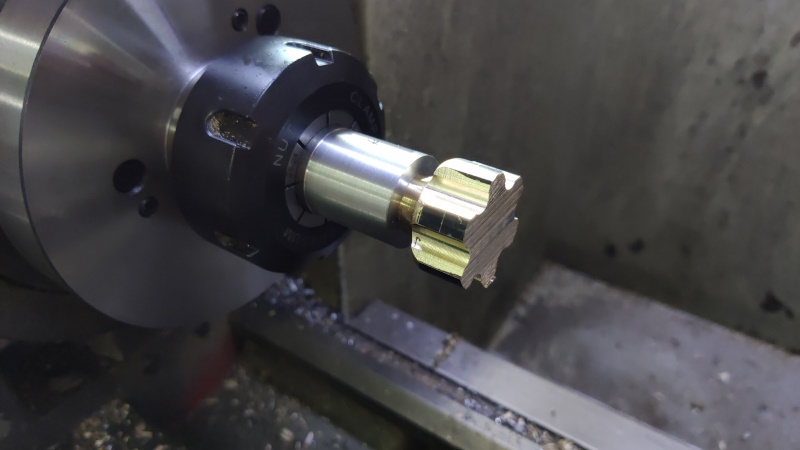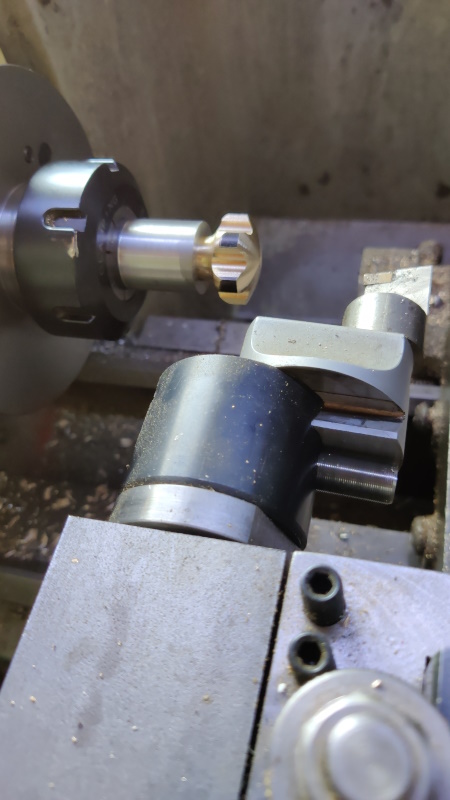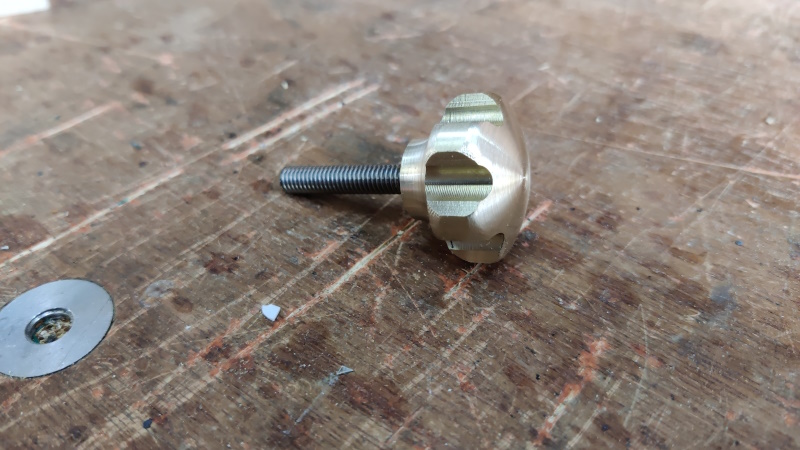Travel Tool Chest & Workbench Build Process
Page 87 of 144
Posted 15th July 2023
Today is the first day that I've managed to spend any time in the workshop since I got back from France three weeks ago. The rain was coming down horizontally (if you'll forgive the oxymoron) so I needed to keep the workshop door shut. As that limits what I can do at the woodwork end of the workshop I thought I'd do a bit of metal mangling for a change.
A while ago I was fortunate enough to get (for free) quite a few bars of 32-ish mm brass. Today I decided to sacrifice one of them to the greater good.
32 mm is too big for my collet chuck, so I started by turning the entire bar down to 30 mm. So that I could get at as much of the bar as possible, I decided to do this between centres (so I could turn most of it down to size, then flip it end to end and be sure the last bit is concentric with the first):
Action shot:
Without a travelling steady fitted and with the rather inconsistent wear on my old lathe, this was never going to be a very accurate process, but it doesn't really matter here as long as the whole bar is no more than 30 mm diameter.
With that done, I moved over to the milling machine, again working between centres (with a drive dog specifically designed for 30 mm stock that I made a few years ago):
It took a while to get it dialled in (checking with a dial indicator running along the top of the bar and then the side of the bar), but I got there in the end.
That set-up was seriously stretching the limits of the milling machine. I could only get one screw in the tailstock (as the other end stuck out beyond the end of the t-slots), so that got a table clamp to hold it down more firmly. I could also only clamp one side of the rotary table for a similar reason, so I used an F-clamp to hold the rotary table down. That necessitated taking off the spindle handles as otherwise they would have hit the F-clamp as the table traversed:
With the mill all set-up and the X-axis power feed doing its job, I gradually plunged a 6 mm ball-end slot-drill into the brass until it got to 4.5 mm depth:
That got repeated in six places around the circumference:
The next job was to take off the sharp corners. Ideally this would be with a corner-rounding end mill, but I don't have anything that would fit and do the job and I couldn't be bothered to make a custom fly cutter, so I just used the side of a 12 mm end mill to chamfer the edges:
The final profile, of which I now have about 400 mm (way, way more than I need).
The bar then went in the collet chuck (I do like having a big spindle bore):
I ground a form tool with a 6 mm radius on the end and used that to face off the end and then shape a bit of the length. Then I spot drilled, drilled and tapped an M6 hole in the end:
A round-over was then added by eye with a file:
The bar was then removed from the lathe and sawn off on the bandsaw. I could have done this with a parting tool, but there's no great benefit to doing so and this way wastes less material and is quicker:
The next job was to make a simple mandrel by facing off a bit of mild steel, drilling and tapping M6 and then inserting a length of M6 threaded bar:
The cut-off piece could then be screwed onto the mandrel:
My home-made ball-turning attachment turned a circa 30 mm radius on the face:
I then used a file again to blend the edges together a little and finally fitted a length of stainless steel threaded rod into the knob (this will get held in place with Loctite 603 at some point):
Et voila:
It was a lot more effort than simply knurling the outside, but I thought it would add a bit of character and I was curious to see whether I could pull it off.
I've still got five more to make (three for the planing stops and three for the back stop), but there's enough shaped brass there to make about 18 in total so I'm not in danger of running out! The lathe part of the job is much, much quicker than the mill work so making the other 5 should be a fairly quick job, especially as I'll prepare one end of all of the remaining ones in one go, then fit / adjust the mandrel, then round over the other end of all of them in one go, which will be much quicker than setting up the mandrel for each one as I go.
Page 87 of 144
This website is free and ad-free, but costs me money to run. If you'd like to support this site, please consider making a small donation or sending me a message to let me know what you liked or found useful.

 Return to main project page
Return to main project page